Hanoi’s train street has become so popular that it must be the envy of the city’s museums and other tourist attractions. The fact that it’s not an “official” tourist sight is a big part of its appeal. It's a tourist destination for the social media age - driven by Instagram and YouTube.
We shot this video in 2017 before the crowds descended.
And here's a video of Train Street now that it's a major Hanoi destination.
None of the cafes and eateries now lining the rail tracks existed a couple of years ago. They’ve all sprung up since train street became a traveller thing. It's a testimony to the entrepreneurial spirit of the locals.
There are now a number places travellers head for a close up look at Train Street. If you want to catch a passing train, check the timetables on display along the rails. Trains run a few times a day. These are not busy lines.
If train street happens to be closed during your visit (these days it happens periodically), we suggest you take a walk across Long Bien Bridge. You'll get a good sense of the old railway and you'll also get an experience of an iconic bridge and Hanoi's Red River.

Photo: Mark Bowyer Train St Hanoi - near Dien Bien Phu St
Train St - Dien Bien Phu - Phung Hung area.
This is where the traveller interest in the tracks first took hold. When we filmed our video here in 2017 (above), there were few tourists and only a couple of local eateries. Now it’s a full-blown tourist attraction complete with cafes, restaurants and vendors capitalising on the passing trade.
The crowds build when trains are about to pass. Don’t worry, there’ll be plenty of warning if one is coming - and they don’t move too fast. You may be surprised at how tight the space is as trains pass though.
Given the numbers that are now descending on this quirky tourist attraction, something could easily go wrong.
The proximity of the local houses to the railway line and the flurry of activity as trains approach, is what fascinates travellers. Minutes after the trains pass, everything returns to normal with families gathering and children playing on the tracks.

Photo: Mark Bowyer Train St Hanoi - near Dien Bien Phu St
Kham Thien St
The popularity of Hanoi’s train street seems to know no bounds. Another location of trainspotters has popped up in a lively urban area in Hanoi’s Dong Da District.
If you’d like a more local experience (there are still loads of tourists), head to Kham Thien St - which runs off Le Duan St to the south of Hanoi’s main railway station. Kham Thien St is nearby Hanoi 60s cafe and arts precinct. The street was devastated during the 1972 Christmas bombings by US B52s.
Long Bien Bridge is another popular spot for checking out Hanoi’s trains. It’s a perfect Hanoi icon - built in 1902 at the height of French colonial ambition. When it opened, its 1.7km span made it one of the longest bridges in Asia. It opened up the French colonial capital to the port city of Haiphong and to China in the north.
Long Bien Bridge carries the scars of war - it was repeatedly bombed by the US in the 1960s. These days locals view it less as a symbol or repressive colonialism and more a symbol of defiance and resilience. Plans to demolish the bridge a few years ago were quickly scrapped after a local outcry. The locals like their war weary relic just as it is. We do too.
Walking across Long Bien bridge has long been an option for visitors to the city. These days though, travellers seem to prefer to walk along the tracks. This can be more precarious, especially in slippery conditions - be careful.
You can enter the tracks and the bridge from Long Bien Station.
For more on Long Bien Bridge, check out our listing here.

Photo: Mark Bowyer Long Bien Bridge - Hanoi
Train St - some background
When the French made Hanoi the capital of the their Indochina colonies in the late nineteenth century, proximity to China in the north was a major advantage for the city. That proximity helped drive the development of the railways as well. Among the earliest rail lines to be built was between Hanoi and Lao Cai on the Chinese border. The thousands of tourists that flock to Hanoi’s Train St each day don’t realise it, but they’re exploring an important relic of colonial times that remained significant long after the departure of the French.
A little further along the rail line is Long Bien Station and the iconic Long Bien Bridge - a target of US bombers throughout the Vietnam War. Long Bien Bridge connects Hanoi with the port of Haiphong and the Chinese border - it was a key supply route during the war.
Many of the families living along Train Street are former or current employees of Vietnam Railways. Their connection to the place runs deep. Many of the families living along the Phung Hung and Dien Bien Phu junction section of the rail line work or worked on Long Bien Bridge. Some of the oldest of them have been doing so since the Vietnam War years.

Photo: Mark Bowyer A resident of train street welcomes to tourism boom

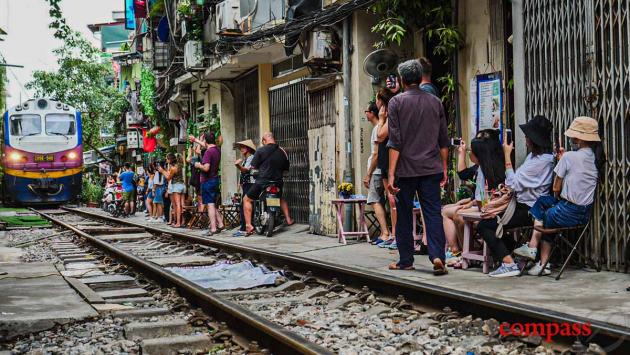
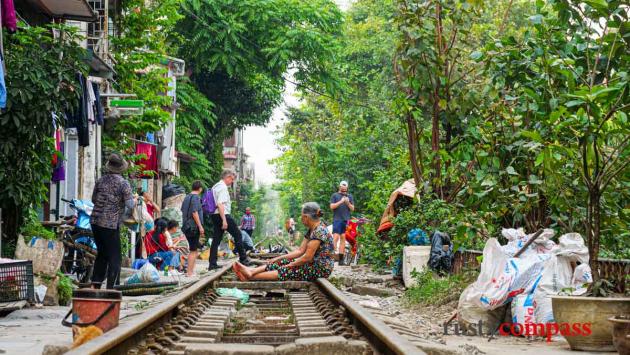
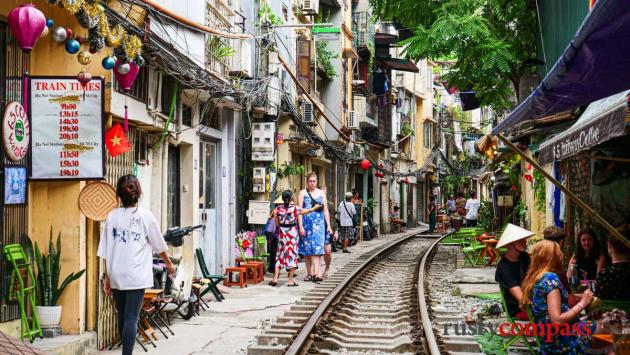
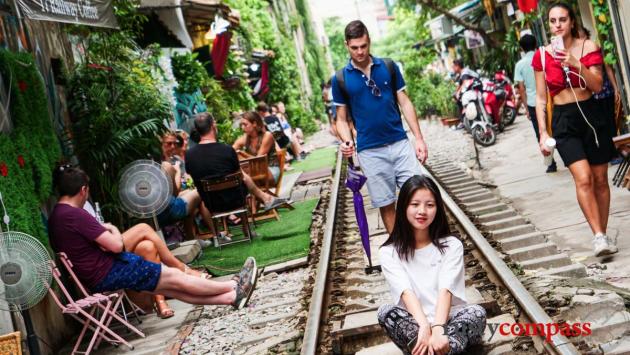
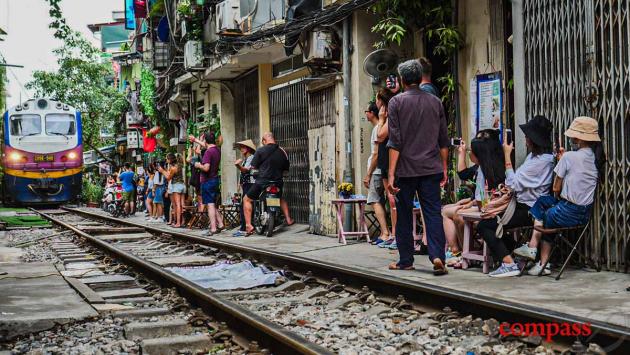
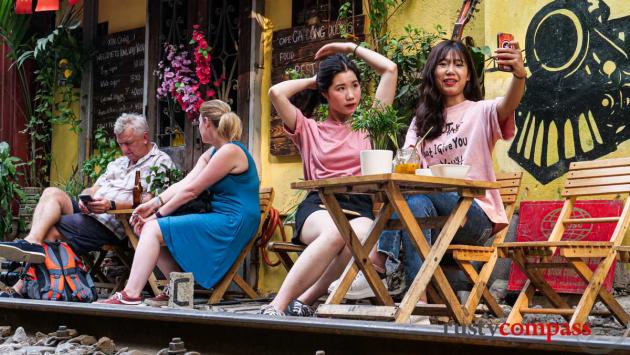







There are no comments yet.